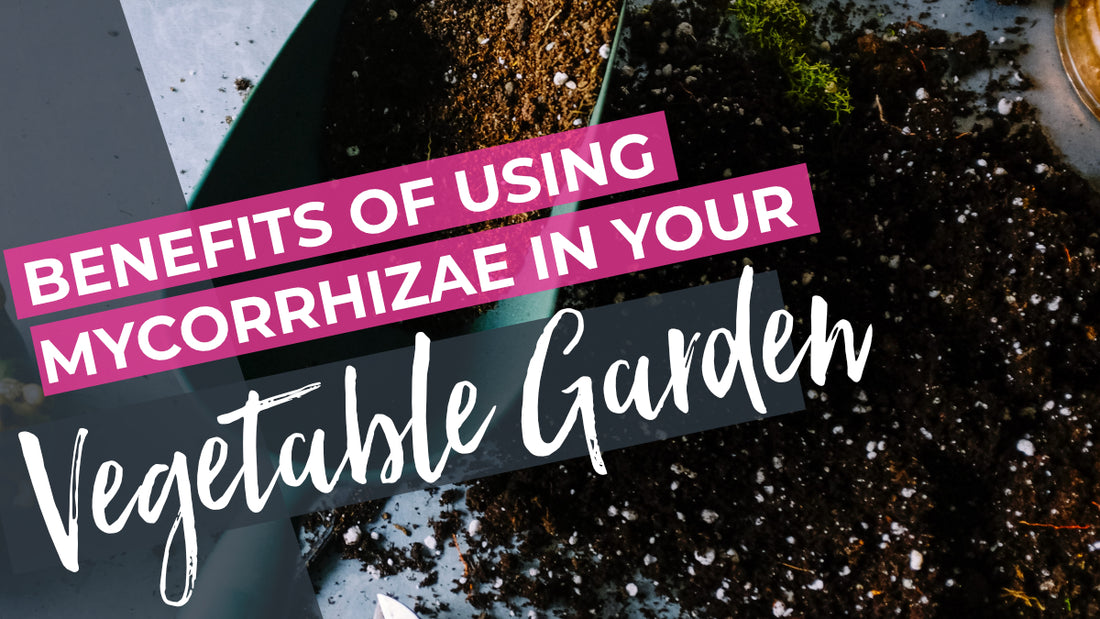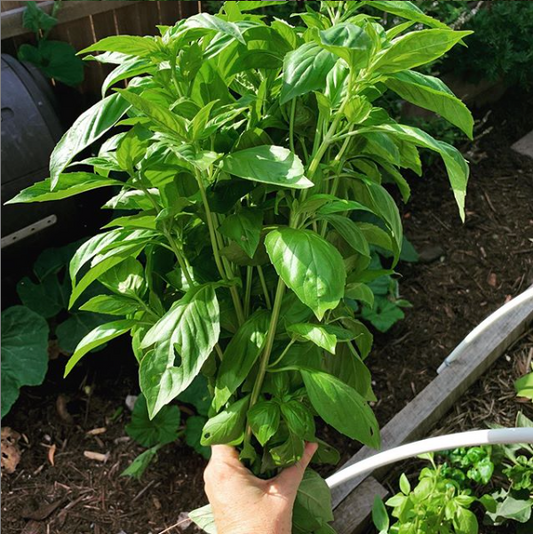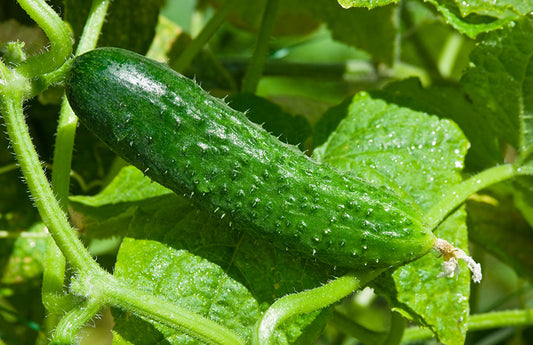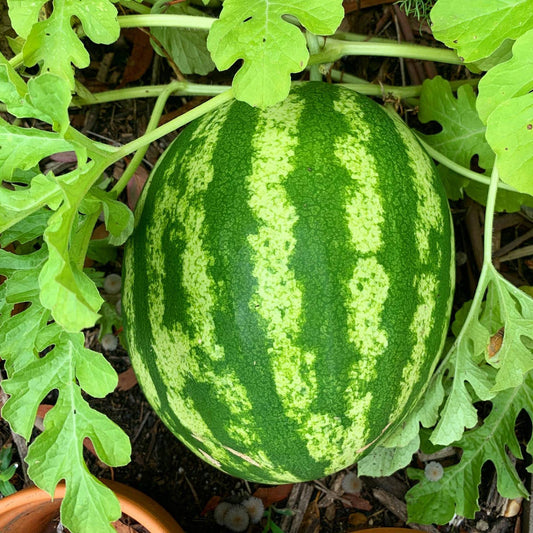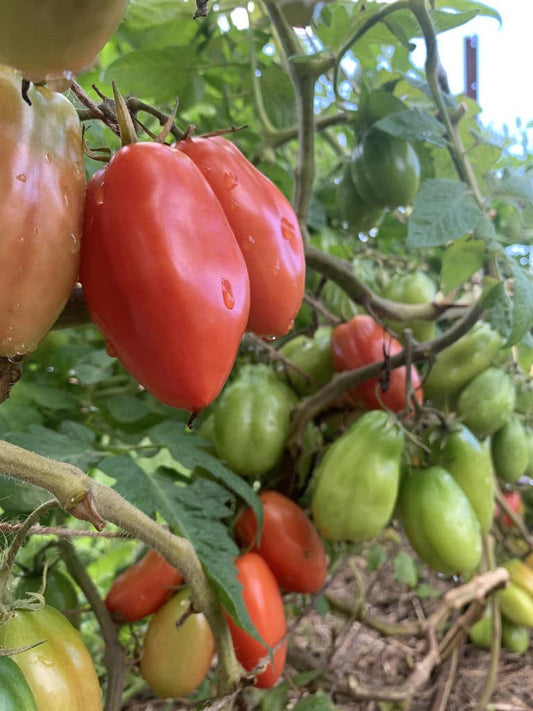Are you looking to supercharge your vegetable garden and grow healthier, more productive plants? If so, it's time to get acquainted with an often-overlooked gardening ally: mycorrhizae. This naturally occurring, beneficial symbiotic relationship between fungi and plant roots can do wonders for your garden. In this article, we'll delve into the why, how, and what of using mycorrhizae to boost your vegetable garden's health and vitality.
What Is Mycorrhizae and Why Is It Good for Your Vegetable Garden?
Mycorrhizae is a mutually beneficial relationship between certain types of fungi and the roots of most plants, including vegetables. This partnership enhances nutrient uptake and provides numerous advantages to your garden:
Enhanced Nutrient Uptake
Mycorrhizal fungi extend the reach of plant roots by forming a vast network of mycelium, which can explore a much larger soil volume. This network efficiently captures and delivers essential nutrients, such as phosphorus, nitrogen, and other minerals, to the plant roots. As a result, your vegetable plants receive a more abundant and balanced supply of nutrients, leading to better growth and yields.
Improved Drought Tolerance
The mycorrhizal network enhances a plant's ability to access water by increasing its root surface area. This, in turn, improves drought resistance, allowing your vegetable garden to thrive during dry spells.
Disease Resistance
Mycorrhizal fungi can help protect plants from soil-borne pathogens and diseases by forming a protective barrier around the root zone. This added defence can significantly reduce the risk of plant infections.
Bigger and Better Harvests
Ultimately, mycorrhizae promote healthier, more robust plants, resulting in increased yields of your favourite vegetables. We experimented with this with growing potatoes in pots.
How to Use Mycorrhizae in Your Vegetable Garden
Now that you're convinced of the benefits of mycorrhizae, let's explore how to incorporate it into your garden:
- Select the Right Mycorrhizal Product: There are various mycorrhizal products available, including powders, granules, and gels. Look for products that contain a mix of different mycorrhizal species, as they can work together to provide a broader spectrum of benefits to your plants. We use and stock MycoGold which has a complete balanced mycorrhiza blend including endomycorrhiza, ectomycorrhiza, trichoderma and beneficial bacteria to increase plant compatibility and boost production. Get it here.
- Prepare Your Garden Bed: If you're starting a new vegetable garden bed, incorporate mycorrhizae into the soil during the initial preparation. Mix the mycorrhizal product with the soil, ensuring it comes into contact with the roots of your future plants.
- Inoculate Plant Roots: When transplanting or setting out your vegetable seedlings, apply mycorrhizal product directly to the roots. Gently dip the roots in the mycorrhizal mixture before placing the seedlings in their planting holes.
- Transplanting Larger Plants: For more established vegetable plants, you can apply mycorrhizae by forming a slurry and drenching the root ball before transplanting. This method ensures the mycorrhizae come into contact with the roots.
- Top Dressing: You can also sprinkle mycorrhizal on the soil surface around your existing plants. Watering afterward will help mycorrhizae reach the root zone.
- Don't Overdo It: Keep in mind that more is not always better when it comes to mycorrhizal application. Follow the instructions on the product label for proper dosing.
- Seed inoculation: Our preferred method, is to add it to our seed raising mix.
Plants That Benefit from Mycorrhizae
Mycorrhizal fungi can enhance the growth and performance of a wide variety of plants, including many common vegetables found in home gardens:
- Tomatoes (Solanum lycopersicum): Tomatoes thrive with mycorrhizal support. Enhanced nutrient uptake can lead to larger, more flavorful fruit.
- Capsicums (Capsicum spp.): Whether you're growing capsicums or chilli mycorrhizae can improve nutrient absorption and overall plant health.
- Beans (Phaseolus spp.): Beans establish strong mycorrhizal partnerships, promoting healthier root systems and increased nitrogen fixation.
- Squash (Cucurbita spp.): Mycorrhizae can benefit both summer and winter squash varieties by boosting nutrient uptake, resulting in larger, more robust plants.
- Corn (Zea mays): Corn can form a mutualistic relationship with mycorrhizal fungi, leading to better nutrient absorption and overall growth.
- Cucumbers (Cucumis sativus): Mycorrhizal associations can help cucumbers establish a strong root system and improve nutrient uptake.
- Lettuce (Lactuca sativa): Even leafy greens like lettuce can benefit from mycorrhizae by absorbing nutrients more efficiently, resulting in healthier, tastier leaves.
- Carrots (Daucus carota): Carrots can establish beneficial mycorrhizal relationships that enhance nutrient uptake and root development.
- Spinach (Spinacia oleracea): Spinach can benefit from mycorrhizal fungi, leading to improved growth and a healthier harvest.
- Onions (Allium cepa) and Garlic (Allium sativum): Mycorrhizae can help allium plants establish strong root systems and improve nutrient absorption.
Tips for Maximising Mycorrhizal Benefits
To ensure you get the most out of your mycorrhizal applications in your vegetable garden, consider the following tips:
- Avoid Synthetic Fertilisation, Pesticides or Herbicides: Mycorrhizae work in harmony with plants by providing nutrients, so be cautious about using excessive synthetic fertilisers. Over-fertilisation can hinder mycorrhizal function.
- Organic Matter: Maintain good soil health by incorporating organic matter like compost and well-rotted manure. Organic matter can enhance mycorrhizal colonisation.
- Minimise Soil Disturbance: Frequent soil tilling and disturbance can disrupt the mycorrhizal network. Consider no-till gardening practices to preserve mycorrhizal associations.
- Rhizosphere Friendliness: Be mindful of your plant choices and their compatibility with mycorrhizae. While most vegetables benefit from mycorrhizal associations, a few, like beets and swiss chard, may be less responsive.
Mycorrhizae is a gardener's secret weapon for cultivating a thriving vegetable garden. The enhanced nutrient uptake, drought tolerance, disease resistance, and improved harvests it provides make it a valuable addition to your gardening toolkit. By selecting the right mycorrhizal products and following proper application techniques, you can maximise the benefits for a healthier, more productive garden. So, give your vegetable garden a mycorrhizal boost, and watch your plants flourish like never before!

